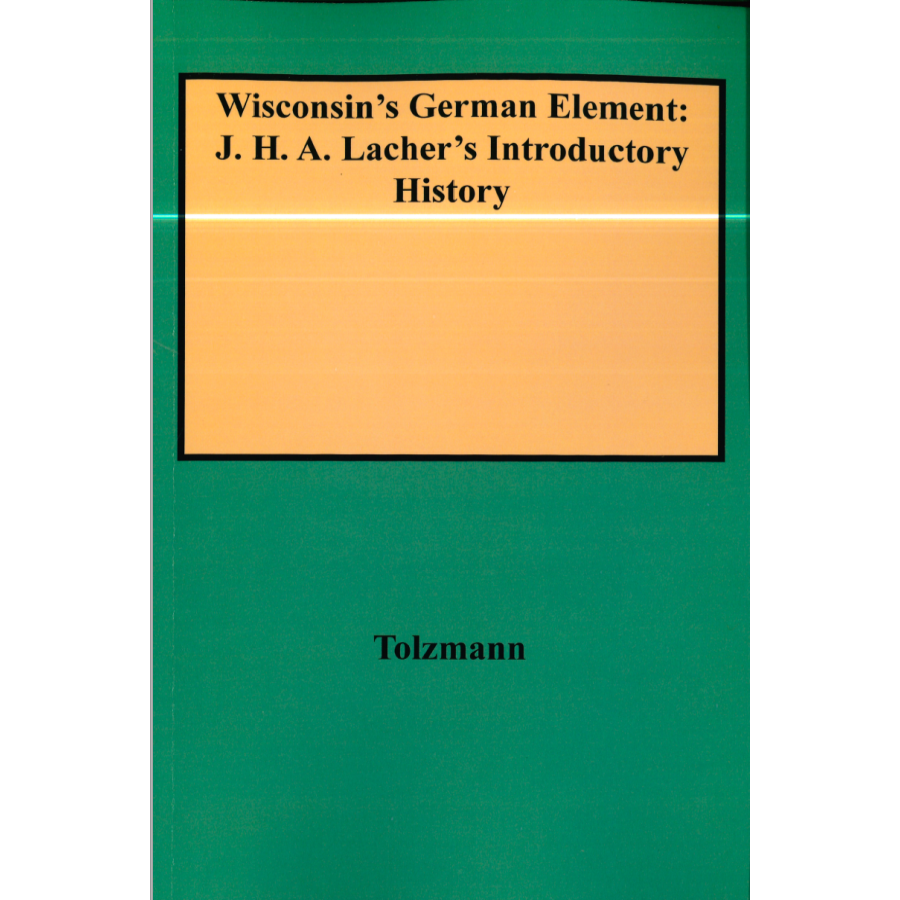Wisconsin's German Element: J. H. A. Lacher's Introductory History
Couldn't load pickup availability
The German element of the United States refers to all immigrants and their offspring from Germany, Austria, Switzerland, and other German-speaking areas of Europe. Today, Wisconsin represents one of our "Germanest" states, with no less that 55 percent of its population claiming German origin. During the great auswanderung of Germans to America of the mid-nineteenth century, hundreds of thousands of these emigrants lost no time in finding their way to Wisconsin and the other four states carved out of the Old Northwest Territory, often seeking a railroad connection to the midwest immediately upon disembarking at their port of entry. This phenomenon practically ensures that today's German element is able to trace its origins in Wisconsin as far back as 150 years.
J. H. A. Lacher's treatise on the German element of Wisconsin, originally published by a division of the Steuben Society of America in 1925, is still the standard introduction to its subject. It has now been edited for republication by German-American authority Don Heinrich Tolzmann. The first section of the work focuses on Wisconsin's rich German religious establishment: Catholics, Lutherans, German Evangelical Synod, German Reformed, Evangelical Association, Liberals and Jews, and it gives the names and places of origin and settlement of pioneering clergymen and other immigrants in the various denominations. Section Two looks at representative German-Americans and their vocations in Wisconsin, with emphasis upon agriculture, art, education, temperance, business, music, cuisine, medicine, and the bar. One of the keys to Germans' assimilation in America was the ease with which they were able to transplant various social and cultural institutions in the building of a German-American identity in their adopted homeland. This is borne out in the third section of the book, which homes in upon Wisconsin German politics, the German press, sports, thrift, men of letters, German place names and patronymics, and the impact of World War I. Genealogists will find references to some 750 German surnames at the back of this volume, while persons seeking to do further research into Wisconsin German history or genealogy should consult the selective bibliography at the back of the book, which has been updated by the editor.
Don Heinrich Tolzmann
(1925, 1999), 2004, paper, 90 pp.
ISBN: 9780806349091
102-9446
